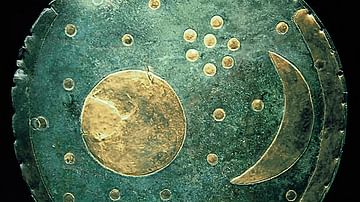Review

| Rating: | |
|---|---|
| Title: | The Middle Kingdom under the Big Sky: A History of the Chinese Experience in Montana |
| Author: | Johnson, Mark T. |
| Audience: | University |
| Difficulty: | Easy |
| Publisher: | University of Nebraska Press |
| Published: | 2022 |
| Pages: | 281 |
Mark Johnson uses newly translated archival documents to explore an early Chinese-American past that was beyond the public perception of 19th-century California. By focusing on how Chinese Americans during the late Qing dynasty balanced their different jobs and the anti-immigration sentiments in the United States, this book narrates a unique history. Undergraduate and graduate-level American history students will especially benefit from this title.
When thinking about early Chinese American history, people often point to the Transcontinental Railroad and California's Gold Rush. However, Chinese residents also built their communities in the American Midwest. Mark T. Johnson's research highlights the Chinese community in Montana between the mid-19th and early-20th centuries. By spending significant time reconstructing the details of a Chinese community, this book resists and revises the outdated and stereotypical views of early Chinese immigrants that denied individuality and identity.
Johnson's book operates around four themes: the Geary Act of 1892, Montana's local anti-Chinese sentiments, the Chinese residents' familial duties, and Chinese solidarity. The eight chapters follow a roughly chronological order, with each chapter covering the simultaneity of the three themes in one form or another in a Chinese Montanan's everyday life.
Due to the public hostilities, Montana's Chinese population fluctuated between over 650 in Helena – the state capital – alone during the 1870s and less than 250 in the whole state entering the 1940s. The Geary Act extended certain terms from the Chinese Exclusion Act of 1882. These two acts combined would affect Chinese residents for over eight decades. The Geary Act, besides continuing to ban new Chinese immigrants, required all Chinese residents already in the U.S. to carry "credentials of residence" at all times. Johnson does a great job linking federal legislation with Montana's local anti-immigration ideas, such as the harassing of Chinese businesses and comparing immigrants to "coyotes" in news articles. Chapters Two and Three focus specifically on this topic.
From Chapter Four on, the author looks at Chinese culture and community-building. Chinese residents mostly worked as laborers, working to support families in China financially. Yet, they were far from an isolated group, despite how one might perceive Montana as a landlocked region. Johnson used newspapers and personal letters from the time to unearth the frequent communications with China. Chinese Montanans also formed groups like huiguan to build communal support. Many of these primary sources were translated for the first time in Johnson's book, as he worked with students and community members in China to translate the materials.
Johnson attempts to make his field of research connected to a broader historical framework instead of reporting on local history, but this aspect feels forced. Readers might not follow the reason behind Johnson situating a comparatively small population within a global network. Johnson seems to believe that connecting a region to areas across mountains and oceans is necessary to prove a community's vibrancy. Yet, with the author's detailed archival sources, readers can understand the need to revise the previously dispiriting perception that Chinese residents lived boring, inferior, and uncivilized lives. Adding the global framework without proving how a group of less than 2,000 could influence a wider network leaves an unanswered question for readers to ponder.
Despite that, this book is a vital contribution to American West history that complicates the Upper Midwest with a multiracial past with spiritual connections outside of the U.S. The Middle Kingdom under the Big Sky suits as a complimentary local history reading for an undergraduate survey class or a core reading for a topic-specific curriculum on Asian American history. Experienced researchers could use this book as an inspiration to build a history of the Upper Midwest that is connected to other national and international regions.
Johnson includes many photos of archival letters, photographs, credentials required by the Geary Act, and maps to help readers visualize the double standards that Chinese residents faced. The book comes with an accompanying website, showing the locations of Chinese cemeteries in Montana.
Mark Johnson is an assistant professor at the University of Notre Dame's Institute of Educational Initiatives. Previously, he worked as a high school teacher in Shanghai for many years. Suitable comparable titles include the journalist Helen Zia's Asian American Dreams: The Emergence of an American People (2000) and Erika Lee's America for Americans: A History of Xenophobia in the United States (2019).
About the Reviewer
Cite This Work
APA Style
Zou, Z. (2023, November 27). The Middle Kingdom under the Big Sky: A History of the Chinese Experience in Montana. World History Encyclopedia. Retrieved from https://www.worldhistory.org/review/386/the-middle-kingdom-under-the-big-sky-a-history-of/
Chicago Style
Zou, Zhihui. "The Middle Kingdom under the Big Sky: A History of the Chinese Experience in Montana." World History Encyclopedia. Last modified November 27, 2023. https://www.worldhistory.org/review/386/the-middle-kingdom-under-the-big-sky-a-history-of/.
MLA Style
Zou, Zhihui. "The Middle Kingdom under the Big Sky: A History of the Chinese Experience in Montana." World History Encyclopedia. World History Encyclopedia, 27 Nov 2023. Web. 12 Dec 2023.



